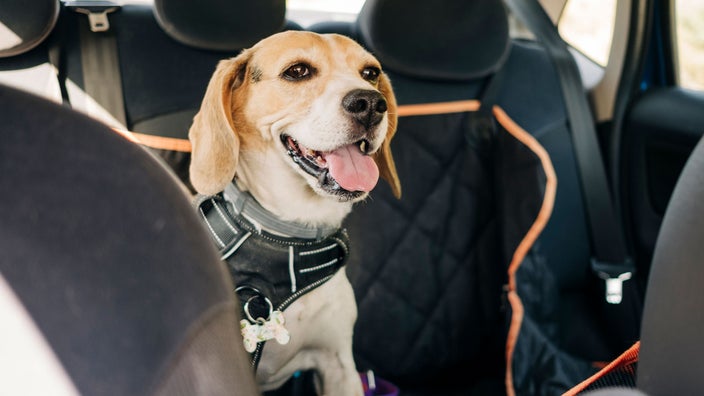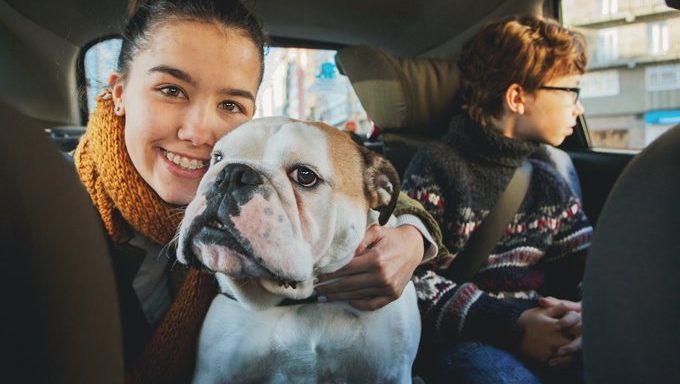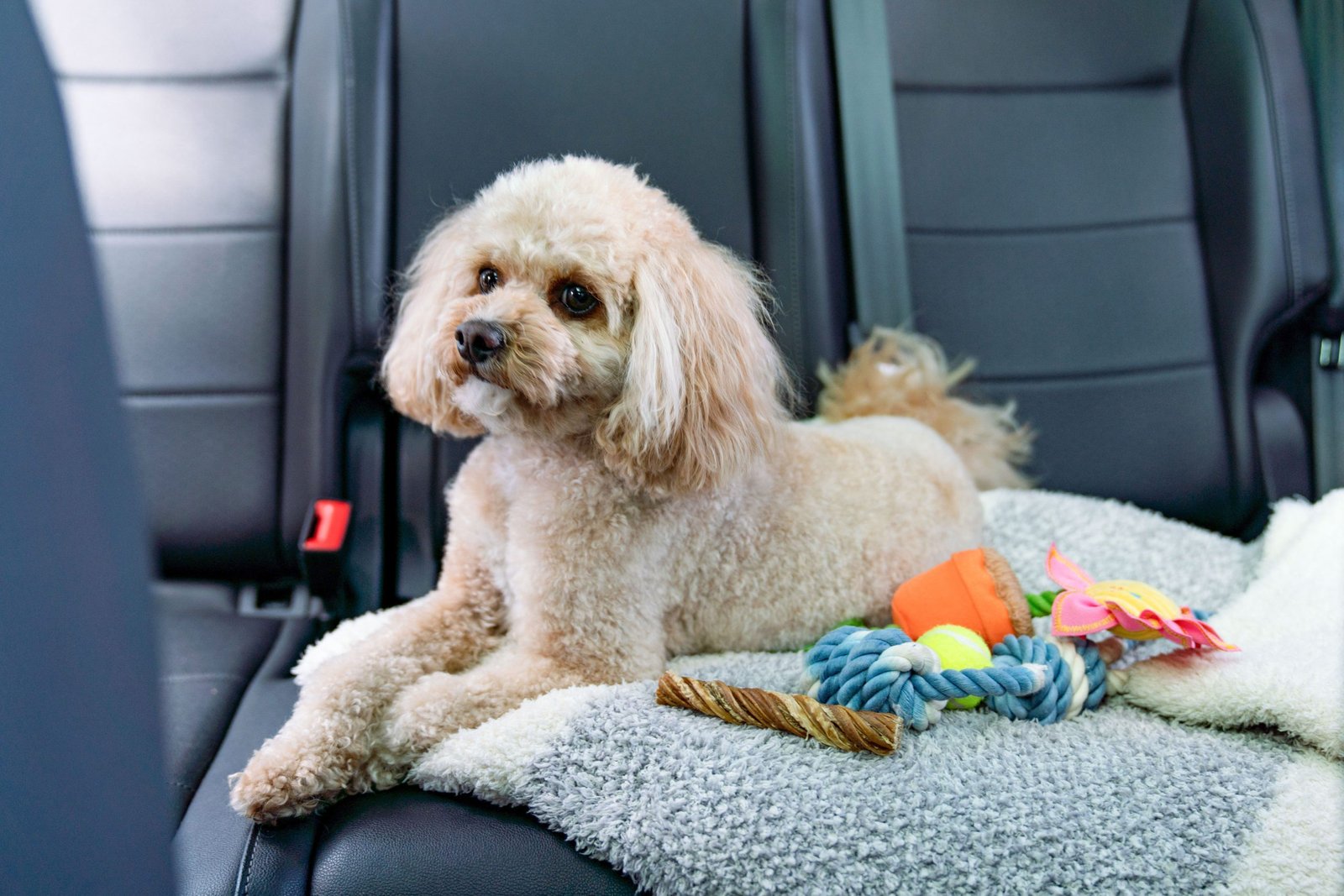Dog car sickness is a condition in dogs that causes nausea and vomiting while traveling in a vehicle. It can be caused by various factors such as motion, anxiety, or food sensitivity.
The symptoms of dog car sickness include drooling, panting, restlessness, and vomiting. Treatment options include medications, behavior modification techniques, and gradual desensitization to car rides. Prevention methods involve making the car rides more comfortable and stress-free for the dog by creating a positive association with the vehicle.

Credit: www.goodrx.com
Causes Of Dog Car Sickness
Dog car sickness can be particularly distressing for both pets and their owners. Understanding the causes behind this condition can help pet owners take necessary measures to alleviate their furry companion’s discomfort. Below are three common factors that contribute to dog car sickness:
Motion Sensitivity
Just like humans, some dogs are more prone to motion sickness than others. Dogs with heightened motion sensitivity tend to experience nausea and vomiting when subjected to the movement and vibrations of a moving vehicle. This sensitivity can be attributed to differences in the dog’s inner ear structure and balance mechanisms.
Anxiety Or Fear
Anxiety or fear is another significant cause of car sickness in dogs. For some pets, the experience of being in a car induces high levels of stress and anxiety, leading to physiological reactions such as increased heart rate, panting, and digestive disturbances. This anxiety can be triggered by factors such as previous negative experiences or a lack of exposure to car travel during their early socialization period.
Previous Negative Experiences
Dogs who have had negative experiences in a car, such as a previous accident or injury while traveling, may develop car sickness as a result. The association of the car with fear and discomfort can lead to nausea and vomiting during subsequent car rides. These negative experiences can create a lasting aversion to car travel and may require a careful and gradual desensitization process to overcome.

Credit: dogtime.com
Symptoms Of Dog Car Sickness
Dog car sickness can make traveling a stressful experience for both you and your furry friend. It’s important to recognize the symptoms of this condition so you can help your dog feel more comfortable on car rides. Here are some common symptoms of dog car sickness:
Excessive Drooling
One telltale sign that your dog may be experiencing car sickness is excessive drooling. Excessive drooling is a natural response to the discomfort and nausea that comes with motion sickness. If you notice your dog drooling excessively during car rides, it’s a good indication that they may be suffering from car sickness.
Vomiting Or Nausea
Vomiting and nausea are two of the most obvious symptoms of dog car sickness. Just like humans, dogs can experience a queasy feeling in their stomachs when traveling in a moving vehicle. If your dog starts retching or vomiting during car rides, it’s a clear sign that they are experiencing car sickness.
Panting And Restlessness
Another symptom of dog car sickness is panting and restlessness. Dogs may pant excessively in an attempt to calm themselves down and alleviate their discomfort. They may also show signs of restlessness and try to find a more comfortable position in the car. If your dog seems agitated and can’t seem to settle down during car rides, it’s likely due to car sickness.
Recognizing these symptoms of dog car sickness is the first step in helping your furry companion feel more at ease during car rides. Once you identify the signs, you can take appropriate measures to treat and prevent car sickness in your dog.
Treatment For Dog Car Sickness
Dealing with dog car sickness can be a real challenge, but fortunately, there are several treatment options available to help alleviate your furry friend’s discomfort. From medications to behavioral training and alternative remedies, finding the right approach can make car rides a much more pleasant experience for your beloved pet.
Medications
If your dog experiences severe car sickness symptoms, your veterinarian may recommend medications to help manage the condition. These medications are often prescribed to prevent motion sickness or to help calm anxiety associated with car rides.
Common medications used for dog car sickness include:
| Medication | Main Ingredients | Usage |
|---|---|---|
| Dramamine | Dimenhydrinate | Prevents motion sickness |
| Cerenia | Maropitant | Prevents motion sickness and vomiting |
| Bonine | Meclizine | Prevents motion sickness |
Behavioral Training
Behavioral training is another effective way to help your dog overcome car sickness. By gradually exposing your pet to short car rides and rewarding them with treats or praise, you can help them associate car rides with positive experiences and reduce their anxiety.
Here are some tips for behavioral training:
- Start with short trips and gradually increase the duration.
- Make the car a comfortable and familiar environment by using your dog’s favorite blanket or toys.
- Offer rewards, such as treats or verbal praise, for calm behavior during car rides.
- Avoid feeding your dog right before a car ride to prevent triggering nausea.
Alternative Remedies
In addition to medications and behavioral training, there are alternative remedies that may provide relief for dog car sickness. These natural options can be used in combination with other treatment methods or as standalone remedies.
Some alternative remedies for dog car sickness include:
- Ginger: Ginger has anti-nausea properties and can be given to your dog in small amounts before a car ride.
- Acupressure bands: These bands apply pressure to specific points on your dog’s body, potentially reducing nausea and anxiety.
- Calming pheromone sprays or diffusers: These products release soothing scents that can help relax your dog during car rides.
While alternative remedies may not work for every dog, they can be worth trying under the guidance of your veterinarian.
Prevention Of Dog Car Sickness
If your dog experiences car sickness, it’s essential to take preventive measures to make car travel a stress-free experience. One effective method is to gradually introduce your furry friend to car rides. Start by sitting with your dog inside a parked car, allowing them to get accustomed to the new environment. Once they seem comfortable, switch on the engine without driving anywhere. Repeat this step a few times until your dog remains at ease before moving on to short, slow car trips around the neighborhood.
Creating a comfortable environment inside the car can significantly reduce the likelihood of dog car sickness. Ensure that the temperature is appropriate and maintained, neither too hot nor too cold. Don’t forget to fasten your pup’s seat belt or use a secure crate to keep them safe during the journey. Placing their favorite blanket or bed in the car will provide them with a sense of familiarity and security, making them less anxious during the ride.
To prevent dog car sickness, it’s important to schedule frequent breaks during your journey. These breaks allow your dog to stretch their legs, relieve themselves, and get some fresh air. Find safe locations along the way where your dog can roam around, sniff, and explore. Encourage them to drink water to stay hydrated, but avoid feeding them right before the ride or during breaks, as a full stomach can increase the risk of car sickness.
Remember, prevention is key when it comes to dog car sickness. By gradually introducing your dog to car rides, creating a comfortable car travel environment, and ensuring frequent breaks, you can make their travel experience enjoyable and sickness-free. Implement these preventive measures to keep your furry friend happy and stress-free on every car journey.

Credit: dogtime.com
Frequently Asked Questions Of Dog Car Sickness: Causes, Symptoms, Treatment, & Prevention
What Can I Do For My Dog That Gets Car Sick?
To help a car-sick dog, try keeping car rides short and frequent to gradually build tolerance. Allow fresh air by cracking open windows or using dog-friendly car vents. Use a dog harness or crate for safety and consider placing your dog in the front seat.
Speak with your vet about possible medications to ease their symptoms.
What Is The Best Motion Sickness Medicine For Dogs?
The best motion sickness medicine for dogs is Cerenia, an FDA-approved medication that effectively prevents and treats nausea and vomiting. It is safe, reliable, and recommended by veterinarians for dogs experiencing motion sickness.
How Long Does It Take For A Dog To Recover From Car Sickness?
A dog’s recovery from car sickness varies, but it typically takes a few weeks to a few months. Providing a comfortable travel environment and gradually desensitizing them to car rides can help speed up the process.
Is Benadryl Or Dramamine Better For Dogs?
Benadryl and Dramamine are both options for dogs, but vary in terms of use. Benadryl is better for allergies and histamine-related issues, while Dramamine is ideal for motion sickness. Always consult with a vet before administering any medication to your dog.
Conclusion
It’s essential to understand the causes, symptoms, treatment, and prevention of dog car sickness to ensure your furry friend’s well-being on road trips. By addressing the root causes, such as anxiety or vestibular problems, and implementing effective treatments like medications or desensitization training, you can help your dog overcome car sickness.
Taking preventive measures, such as gradual exposure to car rides and acclimatizing them to the motion, can greatly reduce the occurrence of car sickness in your beloved pet. Remember, a safe and comfortable car journey is possible with proper understanding and care.

